Brownstone Institute
The Economic Disaster of the Pandemic Response

This article originally published by the Brownstone Institute
BY
On April 15, 2020, a full month after the President’s fateful news conference that greenlighted lockdowns to be enacted by the states for “15 Days to Flatten the Curve,” Donald Trump had a revealing White House conversation with Anthony Fauci, the head of the National institute for Allergy and Infectious Disease who had already become the public face of the Covid response.
“I’m not going to preside over the funeral of the greatest country in the world,” Trump wisely said, as reported in Jared Kushner’s book Breaking History. Two weeks of lockdown was over and the promised Easter opening blew right by too, Trump was done. He also suspected that he had been misled and was no longer speaking to coronavirus coordinator Deborah Birx.
“I understand,” Fauci responded meekly. “I just do medical advice. I don’t think about things like the economy and the secondary impacts. I’m just an infectious diseases doctor. Your job as president is to take everything else into consideration.”
That conversation both reflected and entrenched the tone of the debate over the lockdowns and vaccine mandates and eventually the national crisis that they precipitated. In these debates in the early days, and even today, the idea of “the economy” – viewed as mechanistic, money-centered, mostly about the stock market, and detached from anything truly important – was pitted against public health and lives.
You choose one or the other. You cannot have both. Or so they said.
Pandemic Practice
Also in those days, it was widely believed, stemming from a strange ideology hatched 16 years earlier, that the best approach to pandemics was to institute massive human coercion like we have never before experienced. The theory was that if you make humans behave like non-player characters in computer models, you can keep them from infecting each other until a vaccine arrives which will eventually wipe out the pathogen.
The new lockdown theory stood in contrast to a century of pandemic advice and practice from public-health wisdom. Only a few cities tried coercion and quarantine to deal with the 1918 pandemic, mostly San Francisco (also the home of the first Anti-Mask League) whereas most just treated disease person by person. The quarantines of that period failed and so landed in disrepute. They were not tried again in the disease scares (some real, some exaggerated) of 1929, 1940-44, 1957-58, 1967-68, 2003, 2005, or 2009. In those days, even the national media urged calm and therapeutics during each infectious-disease scare.
Somehow and for reasons that should be discussed – it could be intellectual error, political priorities, or some combination – 2020 became the year of an experiment without precedent, not only in the US but all over the world with the exception of perhaps five nations among which we can include the state of South Dakota. The sick and the well were quarantined, along with stay-at-home orders, domestic capacity limits, and business, school, and church shutdowns,
Nothing turned out according to plan. The economy can be turned off using coercion but the resulting trauma is so great that turning it on again is not so easy. Instead, thirty months later, we face an economic crisis without precedent in our lifetimes, the longest period of declining real income in the post-war period, a health and educational crisis, an exploding national debt plus inflation at a 40-year high, continued and seemingly random shortages, dysfunction in labor markets that defies all models, the breakdown of international trade, a collapse in consumer confidence not seen since we have these numbers, and a dangerous level of political division.
And what happened to Covid? It came anyway, just as many epidemiologists predicted it would. The stratified impact of medically significant outcomes was also predictable based on what we knew from February: the at-risk population was largely the elderly and infirmed. To be sure, most everyone would eventually met the pathogen with varying degrees of severity: some people shook it off in a couple of days, others suffered for weeks, and others perished. Even now, there is grave uncertainty about the data and causality due to the probability of misattribution due to both faulty PCR testing and financial incentives given out to hospitals.
Tradeoffs
Even if lockdowns had saved lives over the long term– the literature on this overwhelming suggests that the answer is no – the proper question to have asked was: at what cost? The economic question was: what are the tradeoffs? But because economics as such was shelved for the emergency, the question was not raised by policy makers. Thus did the White House on March 16, 2020, send out the most dreaded sentence pertaining to economics that one can imagine: “bars, restaurants, food courts, gyms, and other indoor and outdoor venues where groups of people congregate should be closed.”
The results are legion. The lockdowns kicked off a whole range of other policy disastrous decisions, among which an epic bout of government spending. What we are left with is a national debt that is 121% of GDP. This compares to 35% of GDP in 1981 when Ronald Reagan correctly declared it a crisis. Government spending in the Covid response amounted to at least $6 trillion above normal operations, creating debt that the Federal Reserve purchased with newly created money nearly dollar for dollar.

Money Printing
From February May 2020, M2 increased by an average of $814.3 billion per month. On May 18, 2020, M2 was rising 22% year over year, compared with only 6.7% from March that year. It was not yet the peak. That came after the new year, when on February 22, 2021, the M2 annual rate of increase reached a staggering 27.5%.
At the very same time, the velocity of money behaved as one would expect in a crisis of this sort. It plummeted an incredible 23.4% in the second quarter. A crashing rate at which money is being spent puts deflationary pressure on prices regardless of what happens with money supply. In this case, the falling velocity was a temporary salvation. It pushed the bad effects of this quantitative easing – to invoke a euphemism from 2008 – off into the future.

That future is now. The eventual result is the highest inflation in 40 years, which is not slowing down but accelerating, at least according to the October 12, 2022 Producer Price Index, which is hotter than it has been in months. It is running ahead of the Consumer Price Index, which is a reversal from earlier in the lockdown period. This new pressure on producers heavily impacted the business environment and created recessionary conditions.

A Global Problem
Moreover, this was not just a US problem. Most nations in the world followed the same lockdown strategy while attempting to substitute spending and printing for real economic activity. The cause-and-effect relationship holds the world over. Central banks coordinated and their societies all suffered.

The Fed is being called up daily to step up its lending to foreign central banks through the discount window for emergency loans. It is now at the highest level since Spring 2020 lockdowns. The Fed lent $6.5 billion to two foreign central banks in one week in October 2022. The numbers are truly scary and foreshadow a possible international financial crisis.
The Great Head Fake
But back in the spring and summer of 2020, we seemed to experience a miracle. Governments around the country had crushed social functioning and free enterprise and yet real income went soaring. Between February 2020 and March 2021, real personal income during a time with low inflation was up by $4.2 trillion. It felt like magic: a lockdown economy but riches were pouring in.
And what did people do with their new-found riches? There was Amazon. There was Netflix. There was the need for all sorts of new equipment to feed our new existence as digital everything. All these companies benefited enormously while others suffered. Even so we paid off credit card debt. And much of the stimulus was socked away as savings. The first stimulus went straight to the bank: the personal savings rate went from 9.6% to 33% in the course of just one month.
After the summer, people started to get the hang of getting free money from government dropped into their bank accounts. The savings rate started to fall: by November 2020, it was back down to 13.3%. Once Joseph Biden came to power and unleashed another round of stimulus, the savings rate went back up to 26.3%. And just fast forward to the present and we find people saving 3.5% of income, which is half the historical norm dating back to 1960 and about where it was in 2005 when low interest rates fed the housing boom that went bust in 2008. Meanwhile credit card debt is now soaring, even though interest rates are 17% and higher.
In other words, we experienced the wildest swing from shocking riches to rags in a very short period of time. The curves all inverted once the inflation came along to eat out the value of the stimulus. All that free money turned out not to be free at all but rather very expensive. The dollar of January 2020 is now worth only $0.87, which is to say that the stimulus spending covered by Federal Reserve printing stole $0.13 of every dollar in the course of only 2.5 years.
It was one of the biggest head fakes in the history of modern economics. The pandemic planners created paper prosperity to cover up for the grim reality all around. But it did not and could not last.
Right on schedule, the value of the currency began to tumble. Between January 2021 and September 2022, prices increased 13.5% across the board, while costing the average American family $728 in September alone. Even if inflation stops today, the inflation already in the bag will cost the American family $8,739 over the next 12 months, leaving less money to pay off soaring credit card debt.

Let’s return to the salad days before the inflation hit and when the Zoom class experienced delight at their new riches and their work-from-home luxuries. On Main Street, matters looked very different. I visited two medium-sized towns in New Hampshire and Texas over the course of the summer of 2020. I found nearly all businesses on Main Street boarded up, malls empty but for a few masked maintenance men, and churches silent and abandoned. There was no life at all, only despair.
The look of most of America in those days – not even Florida was yet open – was post-apocalyptic, with vast numbers of people huddled at home either alone or with immediate families, fully convinced that a universally deadly virus was lurking outdoors and waiting to snatch the life of anyone foolish enough to seek exercise, sunshine, or, heaven forbid, fun with friends, much less visiting the elderly in nursing homes, which was verboten. Meanwhile, the CDC was recommending that any “essential business” install walls of plexiglass and paste social distancing stickers everywhere where people would walk. All in the name of science.
I am very aware that all of this sounds utterly ridiculous now, but I assure you that it was serious at the time. Several times, I was personally screamed at for walking only a few feet into a grocery aisle that had been designated by stickers to be one way in the other direction. Also in those days, at least in the Northeast, enforcers among the citizenry would fly drones around the city and countryside looking for house parties, weddings, or funerals, and snap images to send to the local media, which would dutifully report the supposed scandal.
These were times when people insisted on riding elevators alone, and only one person at a time was permitted to walk through narrow corridors. Parents masked up their kids even though the kids were at near zero risk, which we knew from data but not from public health authorities. Incredibly, nearly all schools were closed, thus forcing parents out of the office back home. Homeschooling, which has long existed under a legal fog, suddenly became mandatory.
Just to illustrate how crazy it all became, a friend of mine arrived home from a visit out of town and his mother demanded that he leave his Covid-infested bags on the porch for three days. I’m sure you have your own stories of absurdity, among which was the masking of everyone, the enforcement of which went from stern to ferocious as time passed.
But these were the days when people believed the virus was outdoors and so we should stay in. Oddly, this changed over time when people decided that the virus was indoors and so we should be outdoors. When New York City cautiously permitted dining in commercial establishments, the mayor’s office insisted that it could only be outdoors, so many restaurants built an outdoors version of indoors, complete with plastic walls and heating units at a very high expense.
In those days, I had some time to kill waiting for a train in Hudson, New York, and went to a wine bar. I ordered a glass at the counter and the masked clerk handed it to me and pointed for me to go outside. I said I would like to drink it inside since it was freezing and miserable outside. I pointed out that there was a full dining room right there. She said I could not because of Covid.
Is this a law, I asked? She said no it is just good practice to keep people safe.
“Do you really think there is Covid in that room?” I asked.
“Yes,” she said in all seriousness.
At this point, I realized we had fully moved from government-mandated mania to a real popular delusion for the ages.
The commercial carnage for small business has yet to be thoroughly documented. At least 100,000 restaurants and stores in Manhattan alone closed, commercial real estate prices crashed, and big business moved in to scoop up bargains. Policies were decidedly disadvantageous to small businesses. If there were commercial capacity restrictions, they would kill a coffee shop but a large franchise all-you-eat buffet that holds 300 would probably be fine.
So too with industries in general: big tech including Zoom and Amazon thrived, but hotels, bars, restaurants, malls, cruise ships, theaters, and anyone without home delivery suffered terribly. The arts were devastated. In the deadly Hong Kong flu of 1968-69, we had Woodstock but this time we had nothing but YouTube, unless you opposed Covid restrictions in which case your song was deleted and your account blasted into oblivion.
Health Care Industry
To talk about the healthcare industry, let’s return to the early days of the frenzy of the Spring of 2020. An edict had gone out from the Centers for Disease Control and Prevention to all public health officials in the country that strongly urged the closing of all hospitals to everyone but non-elective surgeries and Covid patients, which turned out to exclude nearly everyone who would routinely show up for diagnostics or other normal treatments.
As a result, hospital parking lots emptied out from sea to shining sea, a most bizarre sight to see given that there was supposed to be a pandemic raging. We can see this in the data. The healthcare sector employed 16.4 million people in early 2020. By April, the entire sector lost 1.6 million employees, which is an astonishing exodus by any historical standard. Nurses in hundreds of hospitals were furloughed. Again, this happened during a pandemic.
In another strange twist that future historians will have a hard time trying to figure out, health care spending itself fell off a cliff. From March to May 2020, health care spending actually collapsed by $500 billion or 16.5%.

This created an enormous financial problem for hospitals in general, which, after all, are economic institutions too. They were bleeding money so fast that when the federal government offered subsidies of 20 percent above other respiratory ailments if the patient could be declared Covid positive, hospitals jumped at the chance and found cases galore, which the CDC was happy to accept at face value. Compliance with guidelines became the only path toward restoring profitability.
The throttling of non-Covid services included the near abolition of dentistry that went on for months from Spring through Summer. In the midst of this, I worried that I needed a root canal. I simply could not find a dentist in Massachusetts who would see me. They said every patient first needs a cleaning and thorough examination and all those have been canceled. I had the bright idea of traveling to Texas to get it done but the dentist there said they were restricted by law to make sure all patients from out of state quarantine in Texas for two weeks, time I could not afford. I thought about suggesting to my mother, who was making the appointment, that she simply lie about the date of my arrival but thought better of it given her scruples.
It was a time of great public insanity, not stopped and even fomented by public health bureaucrats. The abolition of dentistry for a time seemed to comply completely with the injunction of the New York Times on February 28, 2020. “To Take on the Coronavirus, Go Medieval on It,” the headline read. We did, even to the point of abolishing dentistry, publicly shaming the diseased on grounds that getting Covid was surely a sign of noncompliance and civic sin, and instituting a feudal system of dividing workers by essential and nonessential.
Labor Markets
Exactly how it came to be that the entire workforce came to be divided this way remains a mystery to me but the guardians of the public mind seemed not to care a whit about it. Most of the delineated lists at the time said that you could keep operating if you qualified as a media center. Thus for two years did the New York Times instruct its readers to stay home and have their groceries delivered. By whom, they did not say, nor did they care because such people are not apparently among their reader base. Essentially, the working classes were used as fodder to obtain herd immunity, and then later subjected to vaccine mandates despite superior natural immunity.
Many, as in millions, were later fired for not complying with mandates. We are told that unemployment today is very low and that many new jobs are being filled. Yes, and most of those are existing workers getting second and third jobs. Moonlighting and side gigging are now a way of life, not because it is a blast but because the bills have to be paid.
The full truth about labor markets requires that we look at the labor participation rate and the worker-population ratio. Millions have gone missing. These are working women who still cannot find child care because that industry never recovered, and so participation is back at 1988 levels. They are early retirements. They are 20 somethings who moved home and went on unemployment benefits. There are many more who have just lost the will to achieve and build a future.

The supply chain breakages need their own discussion. The March 12, 2020, evening announcement by President Trump that he would block all travel from Europe, UK, and Australia beginning in five days from then started a mad scramble to get back to the US. He also misread the teleprompter and said that the ban would also apply to goods. The White House had to correct the statement the next day but the damage was already done. Shipping came to a complete standstill.
Supply Chains and Shortages
Most economic activity stopped. By the time the fall relaxation came and manufacturers started reordering parts, they found that many factories overseas had already retooled for other kinds of demand. This particularly affected the semiconductor industry for automotive manufacturing. Overseas chip makers had already turned their attention to personal computers, cellphones, and other devices. This was the beginning of the car shortage that sent prices through the roof. This created a political demand for US-based chip production which has in turn resulted in another round of export and import controls.
These sorts of problems have affected every industry without exception. Why the paper shortage today? Because so many of the paper factories which shifted to plywood after that had gone sky-high in price to feed the housing demand created by generous stimulus checks.
We could write books listing all the economic calamities directly caused by the disastrous pandemic response. They will be with us for years, and yet even today, not many people fully grasp the relationship between our current economic hardships, and even the growing international tensions and breakdown of trade and travel, and the brutality of the pandemic response. It is all directly related.
Anthony Fauci said at the outset: “I don’t think about things like the economy and the secondary impacts.” And Melinda Gates said the same in a December 4, 2020 interview with the New York Times: “What did surprise us is we hadn’t really thought through the economic impacts.”
The wall of separation posited between “economics” and public health did not hold in theory or practice. A healthy economy is indispensable for healthy people. Shutting down economic life was a singularly bad idea for taking on a pandemic.
Conclusion
Economics is about people in their choices and institutions that enable them to thrive. Public health is about the same thing. Driving a wedge between the two surely ranks among the most catastrophic public-policy decisions of our lifetimes. Health and economics both require the nonnegotiable called freedom. May we never again experiment with its near abolition in the name of disease mitigation.
This is based on a presentation at Hillsdale College, October 20, 2022, to appear in a shortened version in IMPRIMUS
Brownstone Institute
If the President in the White House can’t make changes, who’s in charge?
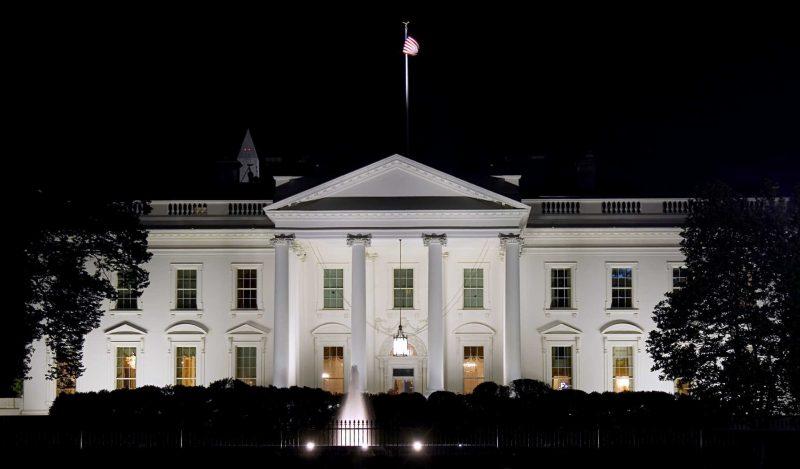
From the Brownstone Institute
By
Who Controls the Administrative State?
President Trump on March 20, 2025, ordered the following: “The Secretary of Education shall, to the maximum extent appropriate and permitted by law, take all necessary steps to facilitate the closure of the Department of Education.”
That is interesting language: to “take all necessary steps to facilitate the closure” is not the same as closing it. And what is “permitted by law” is precisely what is in dispute.
It is meant to feel like abolition, and the media reported it as such, but it is not even close. This is not Trump’s fault. The supposed authoritarian has his hands tied in many directions, even over agencies he supposedly controls, the actions of which he must ultimately bear responsibility.
The Department of Education is an executive agency, created by Congress in 1979. Trump wants it gone forever. So do his voters. Can he do that? No but can he destaff the place and scatter its functions? No one knows for sure. Who decides? Presumably the highest court, eventually.
How this is decided – whether the president is actually in charge or really just a symbolic figure like the King of Sweden – affects not just this one destructive agency but hundreds more. Indeed, the fate of the whole of freedom and functioning of constitutional republics may depend on the answer.
All burning questions of politics today turn on who or what is in charge of the administrative state. No one knows the answer and this is for a reason. The main functioning of the modern state falls to a beast that does not exist in the Constitution.
The public mind has never had great love for bureaucracies. Consistent with Max Weber’s worry, they have put society in an impenetrable “iron cage” built of bloodless rationalism, needling edicts, corporatist corruption, and never-ending empire-building checked by neither budgetary restraint nor plebiscite.
Today’s full consciousness of the authority and ubiquity of the administrative state is rather new. The term itself is a mouthful and doesn’t come close to describing the breadth and depth of the problem, including its root systems and retail branches. The new awareness is that neither the people nor their elected representatives are really in charge of the regime under which we live, which betrays the whole political promise of the Enlightenment.
This dawning awareness is probably 100 years late. The machinery of what is popularly known as the “deep state” – I’ve argued there are deep, middle, and shallow layers – has been growing in the US since the inception of the civil service in 1883 and thoroughly entrenched over two world wars and countless crises at home and abroad.
The edifice of compulsion and control is indescribably huge. No one can agree precisely on how many agencies there are or how many people work for them, much less how many institutions and individuals work on contract for them, either directly or indirectly. And that is just the public face; the subterranean branch is far more elusive.
The revolt against them all came with the Covid controls, when everyone was surrounded on all sides by forces outside our purview and about which the politicians knew not much at all. Then those same institutional forces appear to be involved in overturning the rule of a very popular politician whom they tried to stop from gaining a second term.
The combination of this series of outrages – what Jefferson in his Declaration called “a long train of abuses and usurpations, pursuing invariably the same Object” – has led to a torrent of awareness. This has translated into political action.
A distinguishing mark of Trump’s second term has been an optically concerted effort, at least initially, to take control of and then curb administrative state power, more so than any executive in living memory. At every step in these efforts, there has been some barrier, even many on all sides.
There are at least 100 legal challenges making their way through courts. District judges are striking down Trump’s ability to fire workers, redirect funding, curb responsibilities, and otherwise change the way they do business.
Even the signature early achievement of DOGE – the shuttering of USAID – has been stopped by a judge with an attempt to reverse it. A judge has even dared tell the Trump administration who it can and cannot hire at USAID.
Not a day goes by when the New York Times does not manufacture some maudlin defense of the put-upon minions of the tax-funded managerial class. In this worldview, the agencies are always right, whereas any elected or appointed person seeking to rein them in or terminate them is attacking the public interest.
After all, as it turns out, legacy media and the administrative state have worked together for at least a century to cobble together what was conventionally called “the news.” Where would the NYT or the whole legacy media otherwise be?
So ferocious has been the pushback against even the paltry successes and often cosmetic reforms of MAGA/MAHA/DOGE that vigilantes have engaged in terrorism against Teslas and their owners. Not even returning astronauts from being “lost in space” has redeemed Elon Musk from the wrath of the ruling class. Hating him and his companies is the “new thing” for NPCs, on a long list that began with masks, shots, supporting Ukraine, and surgical rights for gender dysphoria.
What is really at stake, more so than any issue in American life (and this applies to states around the world) – far more than any ideological battles over left and right, red and blue, or race and class – is the status, power, and security of the administrative state itself and all its works.
We claim to support democracy yet all the while, empires of command-and-control have arisen among us. The victims have only one mechanism available to fight back: the vote. Can that work? We do not yet know. This question will likely be decided by the highest court.
All of which is awkward. It is impossible to get around this US government organizational chart. All but a handful of agencies live under the category of the executive branch. Article 2, Section 1, says: “The executive Power shall be vested in a President of the United States of America.”

Does the president control the whole of the executive branch in a meaningful way? One would think so. It’s impossible to understand how it could be otherwise. The chief executive is…the chief executive. He is held responsible for what these agencies do – we certainly blasted away at the Trump administration in the first term for everything that happened under his watch. In that case, and if the buck really does stop at the Oval Office desk, the president must have some modicum of control beyond the ability to tag a marionette to get the best parking spot at the agency.
What is the alternative to presidential oversight and management of the agencies listed in this branch of government? They run themselves? That claim means nothing in practice.
For an agency to be deemed “independent” turns out to mean codependency with the industries regulated, subsidized, penalized, or otherwise impacted by its operations. HUD does housing development, FDA does pharmaceuticals, DOA does farming, DOL does unions, DOE does oil and turbines, DOD does tanks and bombs, FAA does airlines, and so on It goes forever.
That’s what “independence” means in practice: total acquiescence to industrial cartels, trade groups, and behind-the-scenes systems of payola, blackmail, and graft, while the powerless among the people live with the results. This much we have learned and cannot unlearn.
That is precisely the problem that cries out for a solution. The solution of elections seems reasonable only if the people we elected actually have the authority over the thing they seek to reform.
There are criticisms of the idea of executive control of executive agencies, which is really nothing other than the system the Founders established.
First, conceding more power to the president raises fears that he will behave like a dictator, a fear that is legitimate. Partisan supporters of Trump won’t be happy when the precedent is cited to reverse Trump’s political priorities and the agencies turn on red-state voters in revenge.
That problem is solved by dismantling agency power itself, which, interestingly, is mostly what Trump’s executive orders have sought to achieve and which the courts and media have worked to stop.
Second, one worries about the return of the “spoils system,” the supposedly corrupt system by which the president hands out favors to friends in the form of emoluments, a practice the establishment of the civil service was supposed to stop.
In reality, the new system of the early 20th century fixed nothing but only added another layer, a permanent ruling class to participate more fully in a new type of spoils system that operated now under the cloak of science and efficiency.
Honestly, can we really compare the petty thievery of Tammany Hall to the global depredations of USAID?
Third, it is said that presidential control of agencies threatens to erode checks and balances. The obvious response is the organizational chart above. That happened long ago as Congress created and funded agency after agency from the Wilson to the Biden administration, all under executive control.
Congress perhaps wanted the administrative state to be an unannounced and unaccountable fourth branch, but nothing in the founding documents created or imagined such a thing.
If you are worried about being dominated and destroyed by a ravenous beast, the best approach is not to adopt one, feed it to adulthood, train it to attack and eat people, and then unleash it.
The Covid years taught us to fear the power of the agencies and those who control them not just nationally but globally. The question now is two-fold: what can be done about it and how to get from here to there?
Trump’s executive order on the Department of Education illustrates the point precisely. His administration is so uncertain of what it does and can control, even of agencies that are wholly executive agencies, listed clearly under the heading of executive agencies, that it has to dodge and weave practical and legal barriers and land mines, even in its own supposed executive pronouncements, even to urge what might amount to be minor reforms.
Whoever is in charge of such a system, it is clearly not the people.
Brownstone Institute
Hysteria over Robert F. Kennedy Jr.’s Promise to Make Vaccines Safer
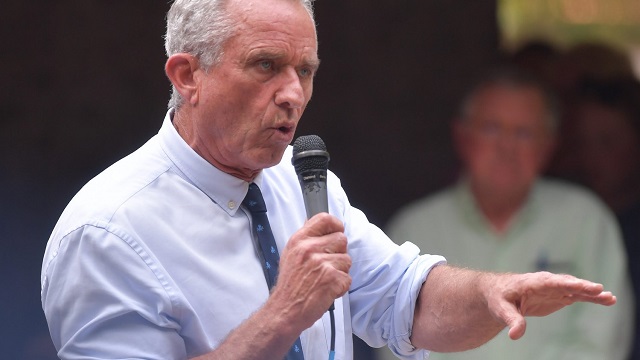
From the Brownstone Institute
By
“People are reacting because they hear things about me that aren’t true, characterizations of things I have said that are simply not true. When they hear what I have to say, actually, about vaccines, everybody supports it.”
Robert F. Kennedy, Jr. has been confirmed as Secretary of the US Department of Health and Human Services.
Within hours, my news feed was populated with angsty articles hand-wringing about the future of vaccines under Kennedy, whom legacy media and the establishment are certain would confiscate life-saving vaccine programs, raising the spectre of mass waves of illness and death.
In particular, this quote from Senator Mitch McConnell (R-KY), the only Republican who voted against Kennedy’s confirmation, appeared over and over again:
“I’m a survivor of childhood polio. In my lifetime, I’ve watched vaccines save millions of lives from devastating diseases across America and around the world. I will not condone the re-litigation of proven cures, and neither will millions of Americans who credit their survival and quality of life to scientific miracles.”
Yet, I could not find one piece of mainstream coverage of this quote that mentioned the astonishing fact that 98% of polio cases in 2023, the most recent year for which we have full data, were caused by the polio vaccine.
You read that correctly. In 2023, 12 wild polio cases were recorded (six in Afghanistan, six in Pakistan), with a further 524 circulating vaccine-derived cases, mostly throughout Africa. This trend is in keeping with data from the previous several years.
An important contextualising detail, wouldn’t you think?

The cause of this polio resurgence is that the world’s poor are given the oral polio vaccine (OPV), which contains a weakened virus that can replicate in the gut and spread in feces, causing vaccine-derived outbreaks.
People in rich countries get the inactivated polio vaccine (IPV), which does not contain live virus and therefore does not carry the risk of spreading the very disease it’s vaccinating against.
The World Health Organization (WHO) and vaccine-promoting organisations say that the way out of the problem is to vaccinate harder, as the argument goes that outbreaks only occur in under-vaccinated communities.
This may be well and good, but the total omission of the fact from media coverage that the goalposts have shifted from eradicating wild polio (not yet complete but nearly there, according to the WHO) to eradicating vaccine-derived polio (the main problem these days) underscores that this is why hardly anyone who knows anything trusts the media anymore.
A member of my extended family has polio. It’s nasty and life-altering and I wouldn’t wish it on anyone.
That’s why I would hope that any vaccines given would be safe – contracting polio from the supposedly preventative vaccine is the worst-case scenario, second only to death.
This is Kennedy’s expressly stated aim.
“When people actually hear what I think about vaccines, which is common sense, which is vaccines should be tested, they should be safe, everyone should have informed consent,” he said at his confirmation press conference.
“People are reacting because they hear things about me that aren’t true, characterisations of things I have said that are simply not true.
“When they hear what I have to say, actually, about vaccines, everybody supports it.”
Grown-ups who support vaccines can walk and chew gum. From the point of view of the public health establishment, the polio vaccine has prevented millions of cases and has nearly eradicated the disease.
At the same time, the world’s poorest are afflicted with polio outbreaks which we can work to prevent, and the safety of all polio vaccine products on the market should be subject to the rigorous standards applied to all other medicines.
Unless you think that poor people don’t matter, in which case the status quo might suit you fine.
Republished from the author’s Substack
-

 2025 Federal Election9 hours ago
2025 Federal Election9 hours agoMark Carney: Our Number-One Alberta Separatist
-

 2025 Federal Election12 hours ago
2025 Federal Election12 hours agoNine Dead After SUV Plows Into Vancouver Festival Crowd, Raising Election-Eve Concerns Over Public Safety
-
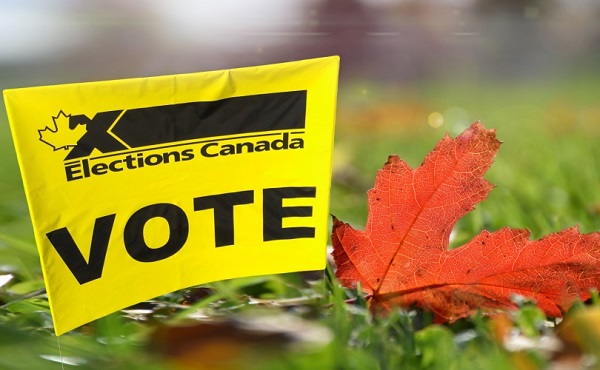
 Opinion1 day ago
Opinion1 day agoCanadians Must Turn Out in Historic Numbers—Following Taiwan’s Example to Defeat PRC Election Interference
-

 International1 day ago
International1 day agoHistory in the making? Trump, Zelensky hold meeting about Ukraine war in Vatican ahead of Francis’ funeral
-

 armed forces2 days ago
armed forces2 days agoYet another struggling soldier says Veteran Affairs Canada offered him euthanasia
-

 International13 hours ago
International13 hours agoJeffrey Epstein accuser Virginia Giuffre reportedly dies by suicide
-
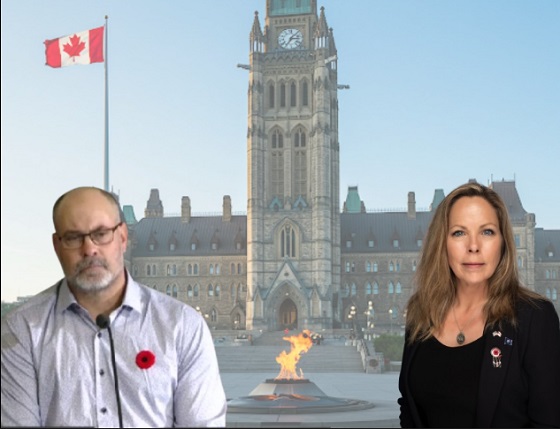
 C2C Journal1 day ago
C2C Journal1 day ago“Freedom of Expression Should Win Every Time”: In Conversation with Freedom Convoy Trial Lawyer Lawrence Greenspon
-
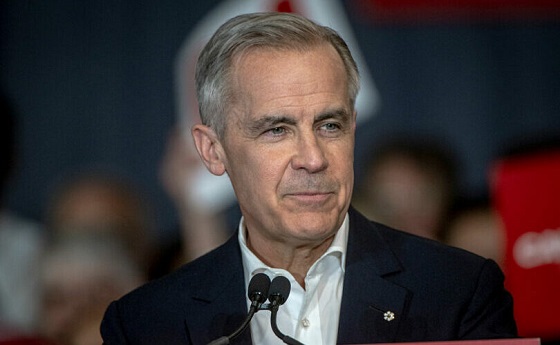
 2025 Federal Election12 hours ago
2025 Federal Election12 hours agoColumnist warns Carney Liberals will consider a home equity tax on primary residences







